This Peak District village does Christmas better than anywhere else

Nothing quite says Christmas like a piece of fluorspar. At least, not in the Peak District village of Castleton, where the unique Blue John gemstone has been mined from the craggy hills above the village since the late 1600s and visitors started touring the caverns in the Georgian period. The discovery of the purple-hued mineral with its distinctive, coloured veins built on the local lead-mining tradition dating back to the Romans.
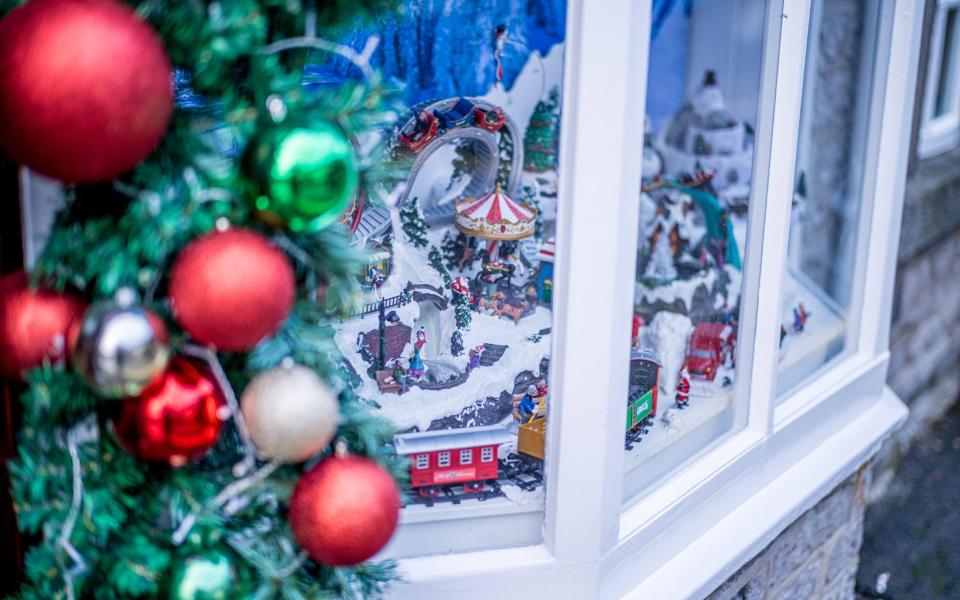
Since the late 1960s, however, Castleton has been known for something else: its festive spirit. The village, located at the head of the scenic Hope Valley between Manchester and Sheffield, is regularly voted one of the most festive places in Britain. Think a high street ablaze with illuminated Christmas trees, carol and brass-band concerts in the show caverns and a Norman church that hosts a community-spirit Christmas tree festival to bring light to the darkest month of the year.
There are plenty of gemstone gifts to buy, but there’s not an overpriced Christmas market, nor a gimmicky light show, to be seen.
“Miners sang the Castleton Carols, a cappella variations on traditional carols, in the 1700s, and made offerings to T’Owd Man, a medieval miner, by lighting candles to bless the mine for the year ahead,” explains Vicky Turner, director of the Treak Cliff Cavern, located on the road to the former Iron Age site of Man Tor (known locally as Shivering Mountain).
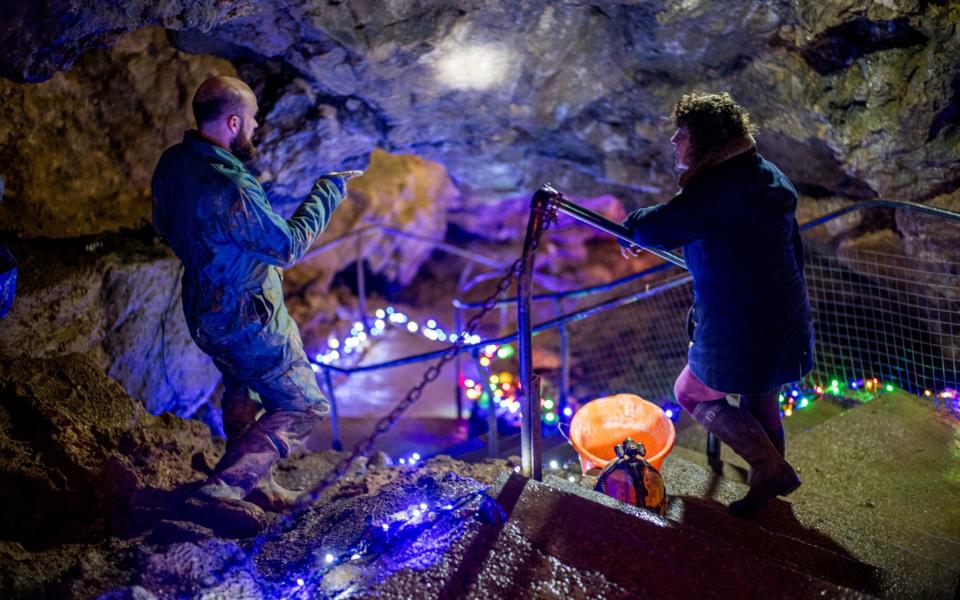
Treak Cliff has Britain’s most extensive deposits of Blue John and will host carols by candlelight on Christmas Eve afternoon. “Come gales, snow or flood,” smiles Vicky, whose family have lived in the village for generations, “we’re always about community and tradition.”
‘As noble as Greece or Switzerland’
Castleton’s tight-knit community grew from the building of Peveril Castle, one of England’s earliest Norman fortresses. Henry II added the keep in 1176 and it became popular with visiting dignitaries as a hunting lodge, hub of the Royal Forest of the Peak. The imposing ruins still loom over the community, albeit today under custody of English Heritage.
Below it, Peak Cavern boasts the largest natural cave entrance in the UK with evidence of its rope-making heritage still visible. When Lord Byron visited Derbyshire in the early 1800s, he proclaimed: “There are things in Derbyshire as noble as Greece or Switzerland.” Queen Victoria was less effusive, however, despite last-minute efforts by locals to disguise signs for Peak Cavern’s better-known local name – the Devil’s Arse.
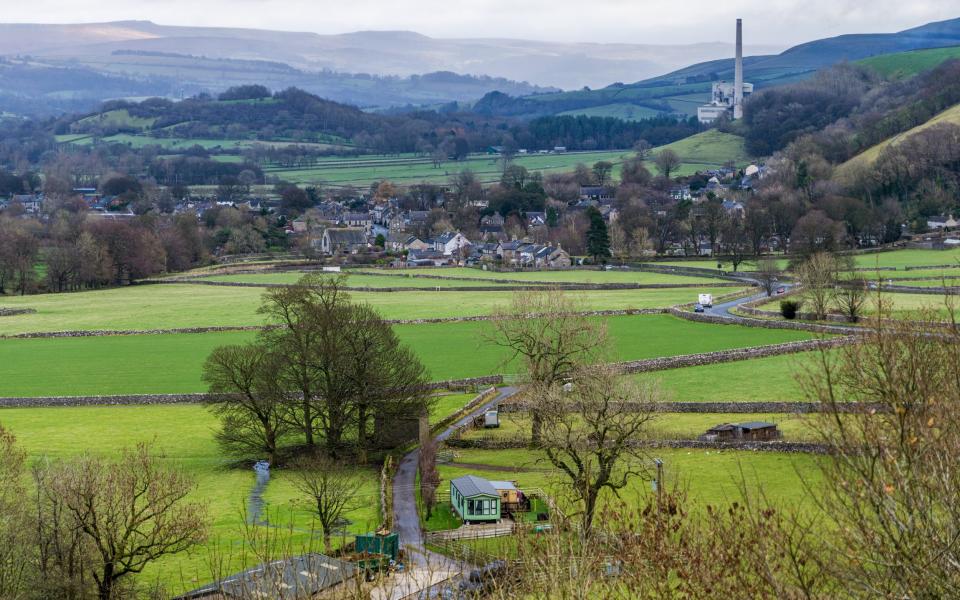
The peaks and crags around Castleton extend beyond a misty horizon to Kinder Scout, home of the 1920s mass trespass that led to the formation of the Peak District as Britain’s first National Park in 1951. It’s uncompromising terrain but it possesses a visceral winter beauty.
“I find the wildness of the winter landscape invigorating,” says Sharon Mosley of the National Park Authority over coffee at the Blueberry Café, located inside the exhibition at the Castleton Visitor Centre. “But, when I’m out walking, just me, a dog and a flask, I always think of our ancestors, traipsing miles through this landscape to the mines.”
Having explored the ginnels (narrow passageways) in the oldest part of the village, bridges and shopfronts illuminated against the slate-grey winter skies, I walk over to St Edmund’s Church, its Romanesque altar arch testament to origins in the 1100s. I find the nave of the church lined with miniature Christmas trees, each one donated by different community groups, to bring light to the winter darkness at this ancient, holy site.
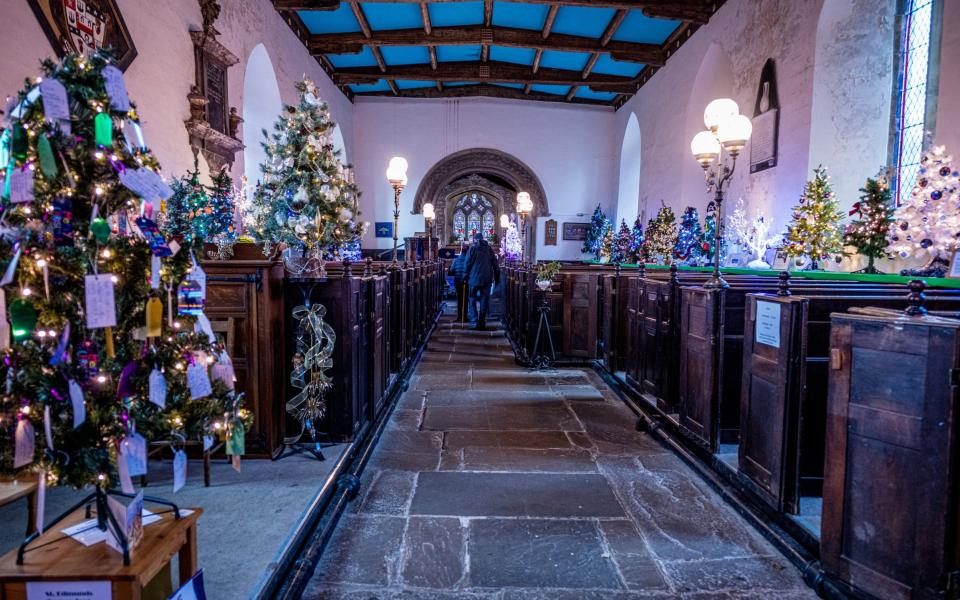
“Castleton thrives not on tinsel and glitter but the true spirit of Christmas,” says the Reverend Louise Petherham, who will be leading her congregation across three rural churches this Christmas. “My sermon will address the parallels between our world today and the original Christmas story, suggesting that people are fundamentally good and welcome outsiders – just as members of this community have done for generations.”
The perfect gift
Miners first uncovered Blue John at Treak Cliff Cavern in 1740, the name a corruption of the French ‘bleu jaune’ as described by the groups of migrant French workers who arrived in the aftermath of the discovery. It’s still used to make ornaments and jewellery, officially recognised as a semi-precious stone since the 1920s, and several historic pieces form part of the collection at Chatsworth in nearby Bakewell.
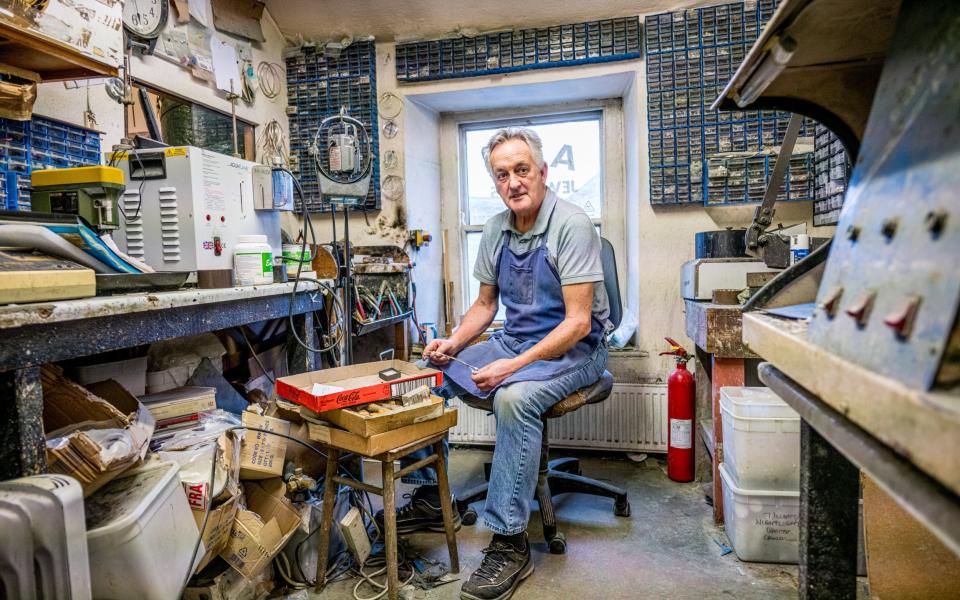
But I finish my visit at ASD Jewellers in the village, where I can’t help but admire Anthony Darwent’s baubles. He makes hand-crafted pieces upstairs from the shop and will be working over Christmas to fulfil orders from across the world. If I was stuck for a last-minute gift, then the display cases are packed with glistening earrings, cufflinks, and brooches, but among the best sellers are the Blue John Christmas baubles – two for £28 on offer.
“Every piece is unique due to the veins of coloured banding,” says Darwent, wiping dusty hands on his apron in his hive-of-activity workshop. “It’s the geological mix of limestone from the southern White Peak and the northern gritstone Dark Peak that makes them so distinctive.”
Castleton may embody the spirit of Christmas for its old-fashioned values of heritage, tradition and community, rather than showy, Christingle bling, but nobody could resist Darwent’s festive, dangling baubles. I allow myself a bit of festive retail therapy. Besides, Castleton Blue John is for life, not just for Christmas.
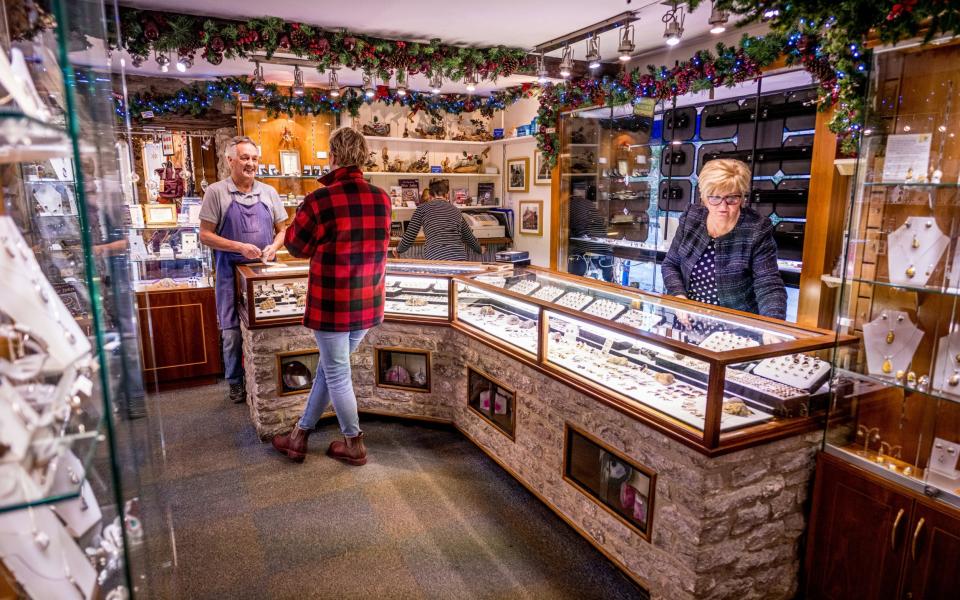
Where to stay
Doubles at The Maynard, Grindleford, from £90 B&B, based on two sharing (www.the-maynard.com). The family-owned group also has a new pub with rooms, The Ashford Arms (theashfordarms.com), opening in Bakewell next spring.
Cave visits
Treak Cliff Cavern opens year-round for tours (£11.50 online booking), plus December carol concerts (www.bluejohnstone.com). Peak Cavern has concerts, weekends at 6pm in December (www.peakcavern.co.uk/christmas-carol-concerts).
Getting there
Train travel provided by Northern on the Hope Valley Line (northernrailway.co.uk). More information from Visit Peak District and Derbyshire (visitpeakdistrict.com).


